
San Pasqual Valley Agricultural Preserve Trail

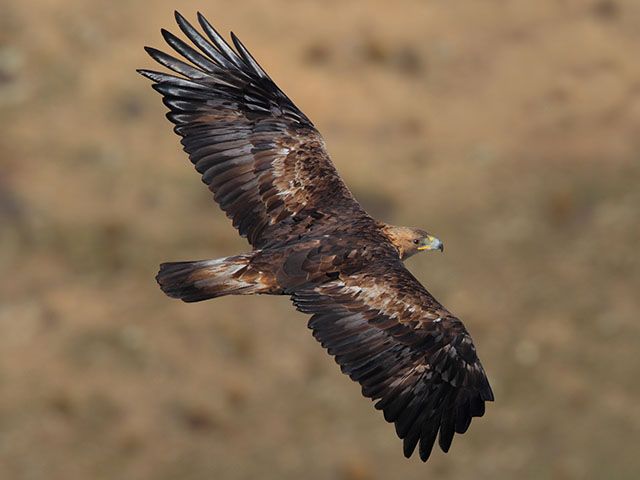
Once this was known as a valley of eagles. To the natives and the later pioneers who settled here, the eagles were a familiar sight gliding gracefully through the air beneath the clouds.
The In-ke-pah tribe called this valley Mo-culoch-culoch, meaning "one stone on top of another". During California's Mission Era in the late eighteenth century, the Spanish Franciscans renamed the valley for Saint Pascal.
Today the valley is designated an Agricultural Preserve and thousands of acres in the beautiful San Pasqual Valley are owned by the City of San Diego and set aside from further urban development. The CIty of San Diego leases the land for farming, a use that helps the City maintain adequate water supplies and protect water quality while at the same time preserving the rural character of the valley and continuing the rich tradition of agriculture within the San Pasqual Valley. The Mediterranean-like climate makes this area ideal for growing a wide variety of crops and livestock products and this diversity is reflected in the positive impact that these agricultural enterprises have on the land and state economy.

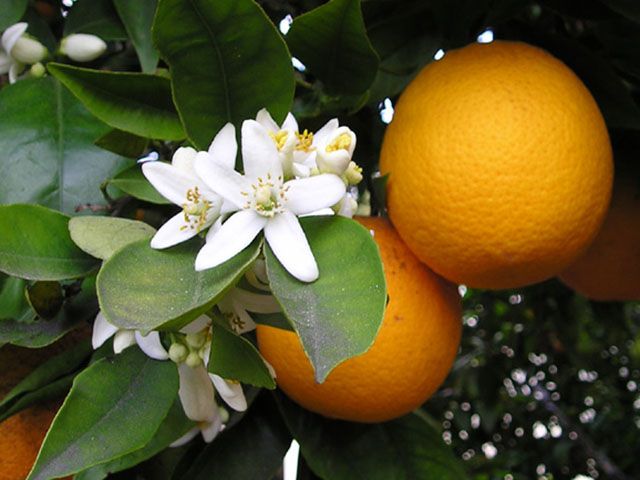
CORN, AVOCADOS, SQUASH, MUSHROOMS, BEETS, ASPARAGUS, LETTUCE, CUCUMBERS, BEANS, TOMATOES, ORANGES, LEMONS, STRAWBERRIES

One type of farming done in the valley is Organic Farming. This is a form of agriculture that promotes ecosystem management, relying on crop rotation and natural rather than synthetic fertilizers and pesticides to enhance plant and soil health.
Organic farming is compatible with healthy wildlife populations because it incorporates soil conservation techniques to protect farmland from runoff and erosion and eliminates chemical residues; these measures ultimately aid in providing safe habitats for a wide variety of birds, animals and insects.

By protecting water quality, clean air, and open space, both agricultural operations and open space wildlife corridors flourish.

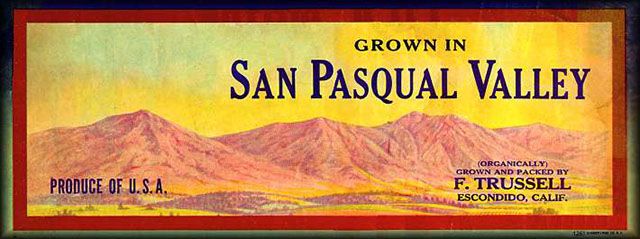
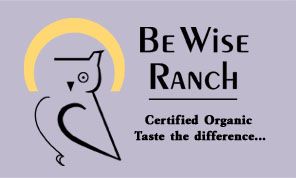

According to the San Diego County Farms Bureau, San Diego County Agriculture:
• Ranks 5th-largest component of San Diego County's economy
• Maintains 2nd-highest number of farms of all counties in the US
• Leads both California and the nation in the production value of nursery crops, floricultural and sod

Non-native Invasive Plants

Non-native, invasive plants adversely affect the environment by damaging and displacing natural vegetation. Many of these exotic plants are rapid growing, their taproots plunging deep into the ground and their tenacious stems spreading out in all directions. Originally believed to be beneficial, Arundo, or giant reed, was used to stabilize eroding river banks; instead, this giant reed chokes stream channels. Pink-flowering, water guzzling tamarisk was once considered an effective wind break and Perennial Pepperweed (Lepidium latifolium), a hitchhiking seed carried by wind, water, animals, and people, and now used by florists in fresh and dried flower arrangements; both have proven to be a real menace in the San Pasqual Valley.
Sections of rivers heavily infested with Arundo donax (giant reed) are nearly devoid of songbirds. Native birds, which did not evolve with these invasive plants, will not build nests nor feed upon non-native vegetation. The Golden Eagle, Least Bell's Vireo, Cactus Wren, and Southwestern Willow Flycatcher are among other avian species in the San Pasqual Valley that thrive in native plant communities. While the damage of invasive non-native plants may not appear immediate, wildlife corridors are affected and water supplies are impacted by the spread of these aggressive invaders. Water, essential for the viability of existing and future farming, and for the preservation of endangered plant and animal species, remains a crucial issue in the San Pasqual Agricultural Preserve and open space park. One tamarisk can suck up to 300 gallons of water per day!


Tamarisk, or Salt Cedar (Tamarix gallica)
Introduced in the early 19th century as an ornamental shrub, a windbreak, and a shade tree, tamarisk is displacing native cottonwoods and willows. Re-sprouting readily after cutting or burning it can produce up to a half a million seeds per plant, making infestations difficult to eradicate.

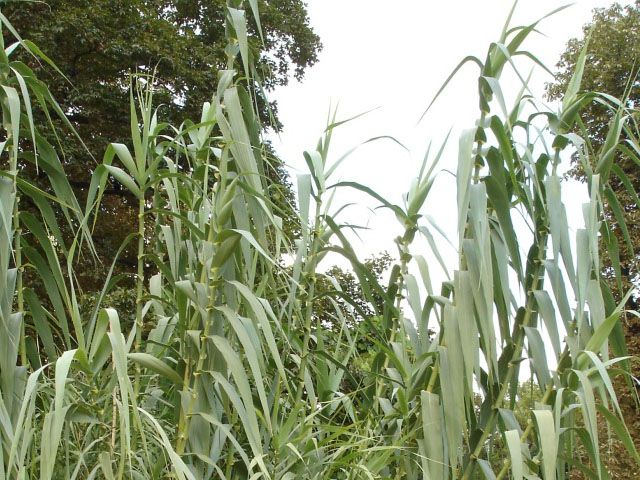
Arundo, or Giant Reed (Arundo donax)
Introduced from the Mediterranean to California in the 1820s for roofing materials and erosion control, Arundo does not provide any food source or nesting habitats for wildlife. It is among the fastest growing terrestrial plants in the world and can increase the intensity and spread of wildfires.

Both of these invasive non-native plants must be chemically controlled.
Educate yourself!
The California Invasive Plant Council (Cal-Ipc) lists 200 plant species as threats to California's wild lands. The majority of these plants were introduced through the nursery industry as ornamental landscape species, and many of them can still be imported and traded in California without restriction. Invasive plants that you can still buy at local nurses include pampas grass, castor bean, Scotch broom, myoporum and many more.
To learn more about non-invasive alternatives, visit the San Dieguito River Park website at www.sdrp.org

What are invasive non-native plants?
Invasive non-native plants are not indigenous to the region and are out competing the native species for resources. They infest natural ecosystems, including wild lands, rangelands and pastures. Often masquerading as pretty plants, they endanger natural areas and agricultural ecosystems by blacking sunlight, robbing the soil of nutrient availability, physically crowding out native plants by their aggressive growth, competing for limited soil moisture, and triggering erosion.
The explosive growth of invasives reduces desirable plant biodiversity. For example, insects are often the source of nutrition for birds and rep ties. Many native insects are able to feed only on specific native plant species. If their preferred plants are crowded out by invasive plants, insect numbers can be dramatically reduced by the lack of suitable food. This can subsequently cause a decrease in the animals that feed of them.

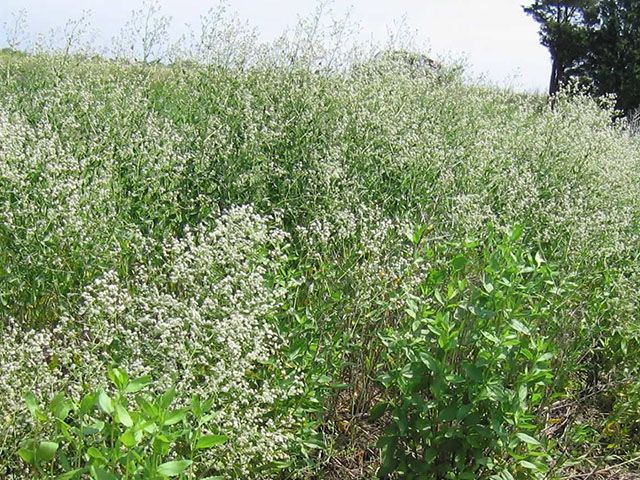
Perennial Pepperweed (Arundo donax)
Native to southern Europe and western Asia, perennial pepperweed, a member of the mustard family, was brought into the country over 100 years ago in bags of sugar beet seed. It transforms floodplains into dense fields of tall while flowering weeds, infesting entire stream corridors and irrigation structures important to crops, and finally devastating crucial habitat areas for endangered species, such as the Arroyo Toad and the Least Bell's Vireo.

Local, state and federal programs allocate millions of dollars annually in an ongoing effort to eradicate invasive weeds. The San Dieguito river Park participates in the Weed Management Area program for the San Pasqual Valley.
By protecting water quality, clean air, and open space, both agricultural operations and open space wildlife corridors flourish.

.

The San Pasqual Valley served as a gateway from the desert and mountain to the seashore long before the dam that created Lake Hodges was built. Prior to European contact, the Kumeyaay people occupied the San Dieguito River Valley. For centuries they traveled between the mountains and the ocean, creating arts that are now portions of the San Dieguito River Park's Coast to Crest Trail.
Primarily hunting and gathering bands, the Kumeyaay modified the waterways along the river corridor, fashioning ponds and pools to provide sufficient water supplies. They established regularly used villages and seasonal campsites in this area and their culture is documented in the archaeological record and through oral traditions.
Through the years, the Kumeyaay saw an influx of people in the valley. European, Mexican and American nationals fought for control and snapped up property through their own legal systems. Later on, gold seekers and farm families began to settle in the valley. By 1870, the Kumeyaay had lost their ancestral lands because they could not show any formal claims to the valley that they had inhabited for centuries.

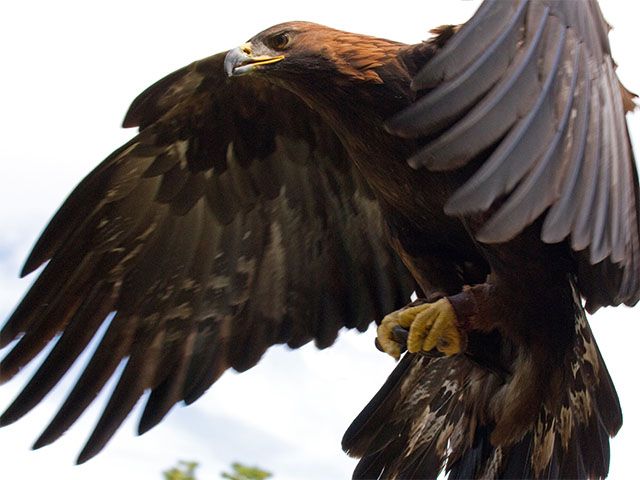
Eagles have special significance in Native American culture. According to legend, the eagle alone has acute eyesight and can look directly into the sun. Coupled with its powerful wings, the eagle embodies vision and strength and is the only creature able to bridge the chasm between the world of man and the spirit world.
There is a tale about Chief Poltho, a spirit-filled man who could change from a man to an eagle. This transformation enabled him to hunt and provide food for his people. No one was allowed to accompany him on his solitary hunting trips; despite this strict order two tribesmen followed him one day and witnessed the transformation rite. Chief Poltho never returned and to this day that is why there is an empty eagle's nest in the cliffs of Bandy Canyon.
Native Americans reputedly utilized over 12,000 varieties of plants for food sources and medicinal purposes: today we call this natural resource management. To the natives, it was simply a way of life. Their diets also consisted of acorns, fish, and mammals including rabbits, deer and wood rats.

Farming has been a way of life in the San Pasqual Valley. Prior to statehood in the 1850, the natives were practicing a mixed economy of subsistence farming and acorn gathering. By the latter part of the nineteenth century, the valley's pioneer farmers–following a growing national trend–were ushering in an age of bigger operations and more mechanization. As better methods of transportation and refrigeration evolved and population and planted acreage increased, the desire to further develop the valley's water resources through different methods of irrigation intensified.

“I have waited long for someone to write the history, the romance, the story of San Pasqual, but I have waited in vain. Pioneers told interesting tales of early days in the Valley, but now, since they have passed to their reward, many historic events are forgotten.”
Mary Rockwood Peet (San Pasqual Valley native), died January 5, 1983, at age 103
“Find some water and then a piece of land to go with it” –advice for purchasing farmland in Southern California, 1880s

In the 1880s, Southern California experienced a land boom. The valley never became an urban center, due both to its proximity to the growing metropolitan areas of San Diego, Los Angeles, and the up and coming town of Escondido, and to the fact that the land boom balloon burst. Farming continued to be the economic mainstay of the valley and as new crops, animals, and equipment were introduced, the exploitation of the valley's ground water set off a number of disputes and lawsuits over water rights that would occupy the courts into the next century.
Many pioneer settlers endured the hardships of farming and remained in the San Pasqual Valley, establishing an agricultural legacy that continues today, and the visible reminders of their struggles dot the landscape. Their daily lives are recorded in the diaries and letters they left behind, illustrating that their sorrows and joys were not very different from our own. The history, the romance, and the story of the San Pasqual Valley is written in their collective memories.

.
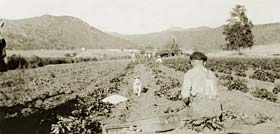
Bud McFeron digging potatoes on his ranch in 1917
“28 Aug 1897 – Same as usual. Milk! Milk! Milk! 15 Aug 1898 – Hot weather. Cows and my spirit seems broken. It seems there are no men to be had who will stick to milking cows year in and year out…”
Ray Trussell, diary excerpts
Although more than 11,000 acres of the San Pasqual Valley are set aside by the City of San Diego as an agricultural preserve, and urban growth is restricted, high operating costs continue to force out dairies and other forms of traditional agriculture. Dairies need reliable water supplies both for feed crops and cattle, and large tracts of open space for grazing. As herd sizes increase to meet market demands and the larger and more efficient dairy farms are able to weather changes in milk prices, the modern family-oriented dairies in the San Pasqual Valley struggle to compete. Community support and preserves like this are vital in keeping our food supplies closer to where we live and work.
Marketing the milk is an impotent step in dairy farming. San Pasqual Valley dairy farmers belong to California Dairies, the second largest dairy cooperative in the US, comprising over 650 dairymen. Organizations like this ensure that the milk is process, sold, and transported to market, allowing the dairy farmer to concentrate on the well of his animals.

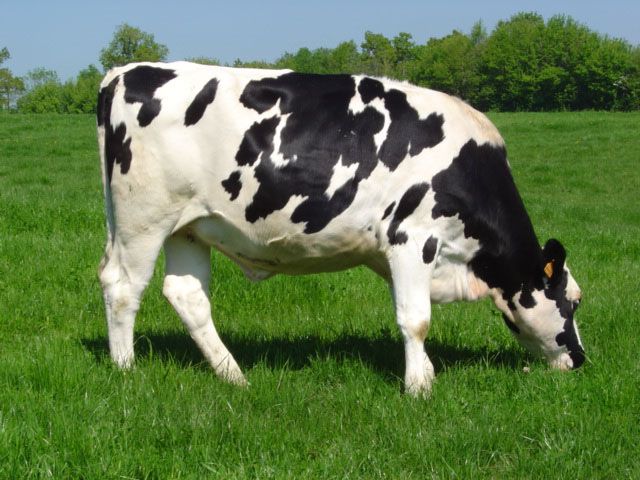
Dairy cattle are a longstanding tradition in the San Pasqual Valley. It's a wholesome heritage and part of this valley's history, and indeed its picture-postcard beauty. But farming is a business, and the dynamics of the agricultural industry change over time. Dairy and pasture are giving way to commercially viable quick cash crops. While fruit agriculture is still prominent, most of the profits are now in nursery and floriculture products, such as ornamental crops – houseplants, turf grass, landscape trees and shrubs, and potted Christmas trees.
The Konyn Dairy is the oldest existing dairy in San Pasqual Valley and, like the Verger Dairy, has been an integral part of the agricultural landscape for over fifty years. Both multi-generational farm families trace their roots back to Holland.
Modern farming began in the San Pasqual Valley in the mid-1800s with the arrival of pioneer settlers. Following a brief boom in wheat farming, the most prevalent agricultural enterprises were dairy farming and citrus growing. By the turn of the twentieth century, there were 18 dairies and two creameries (milk processing plants) in operation, making milk the leading agricultural commodity. Today, there are only two dairies left in San Pasqual Valley, and although California leads the nation in milk production, most of the milk comes from the San Joaquin Valley in the central portion of the state.

The San Pasqual Valley offers essential habitat to over 200 avian species. Because of its status as an agricultural preserve, the area has retained much of the uniquely rural appeal that once characterized all of the river valleys within San Diego County.
As part of the City of San Diego's Multiple Species Conservation Plan, the riparian corridor along the San Dieguito River is protected from encroachment. The diverse native plant communities found here ensure quality habitat for both foraging and nesting as well as cover for shelter and a source of water for both resident and migratory birds.
These are just some of the birds you will see in the San Pasqual Valley!

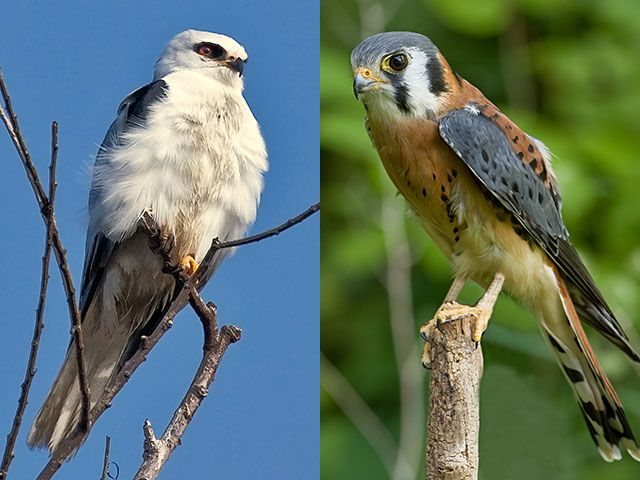
White-tailed Kite / American Kestrel

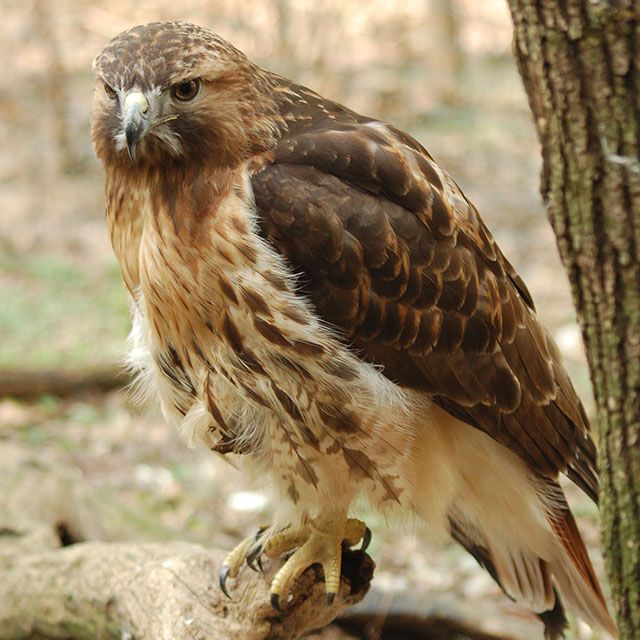
Red-tail Hawk

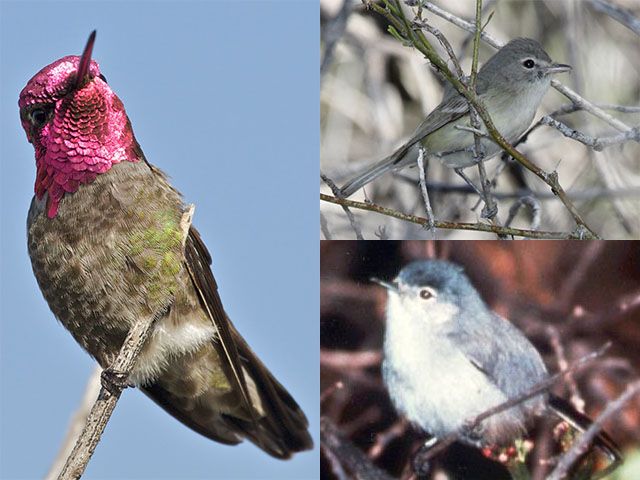
Anna's Hummingbird / Least Bell's Vireo / California Gnatcatcher

Highways in the Sky
The entire San Dieguito watershed is positioned astride the Pacific Flyway–a major north-south seasonal migration route from Alaska to Patagonia, the southernmost portion of South America.
Bird Watching Takes Flight!
The rapidly growing hobby of bird watching–observing, identifying, and studying birds through the naked eye or binoculars–is a recreational industry with "birders" spending billions of dollars worldwide! Enjoy birdwatching along the scenic trailers of the San Dieguito River Park. The San Dieguito River Park sponsors monthly Habitat Restoration Work Projects to improve habitats for sensitive bird and other wildlife species.
The Golden Eagle was historically present in San Pasqual Valley, and can still occasionally be seen.

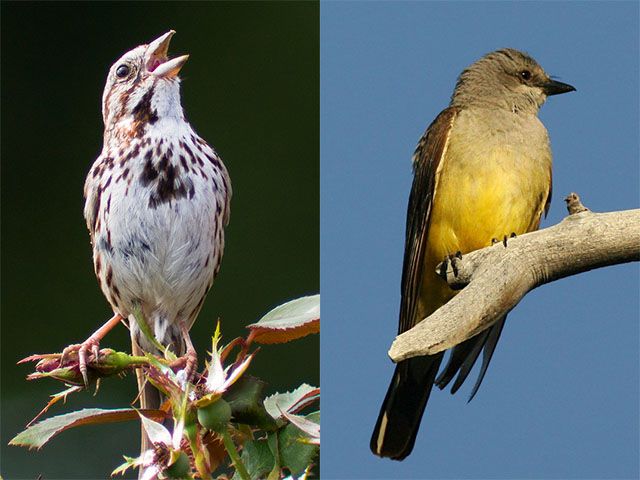
Song Sparrow / Cassin's Kingbird

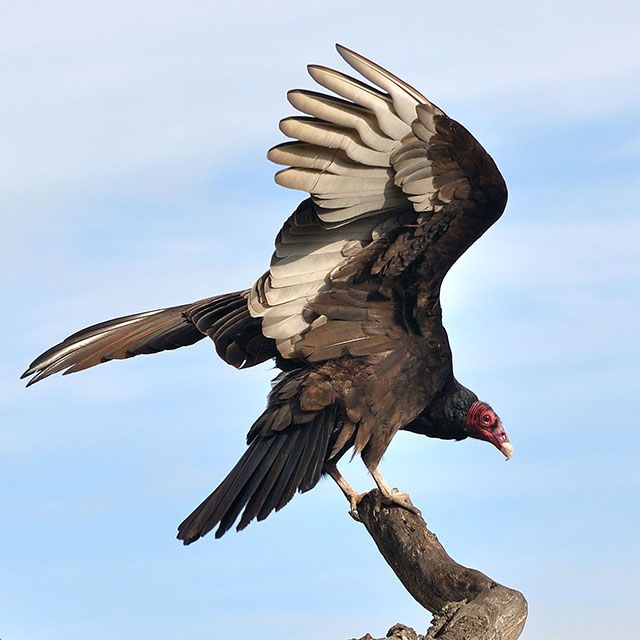
Turkey Vulture

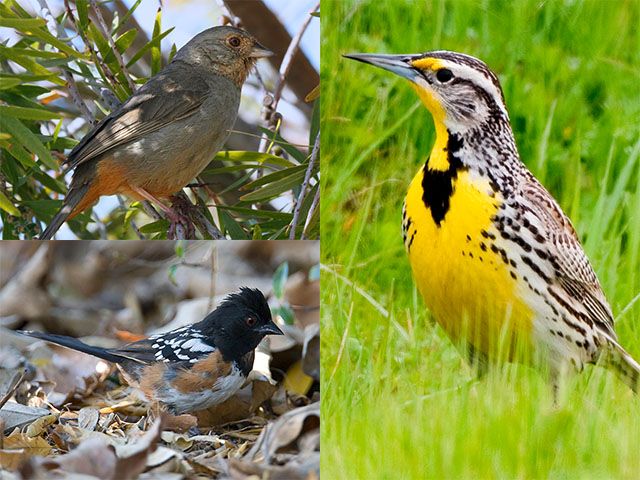
California Towhee / Spotted Towhee / Western Meadowlark

San Pasqual Valley Trail is part of the San Dieguito River Park’s Coast-to-Crest Trail, extending from the Pacific Ocean in Del Mar to the summit of Volcan Mountain.
